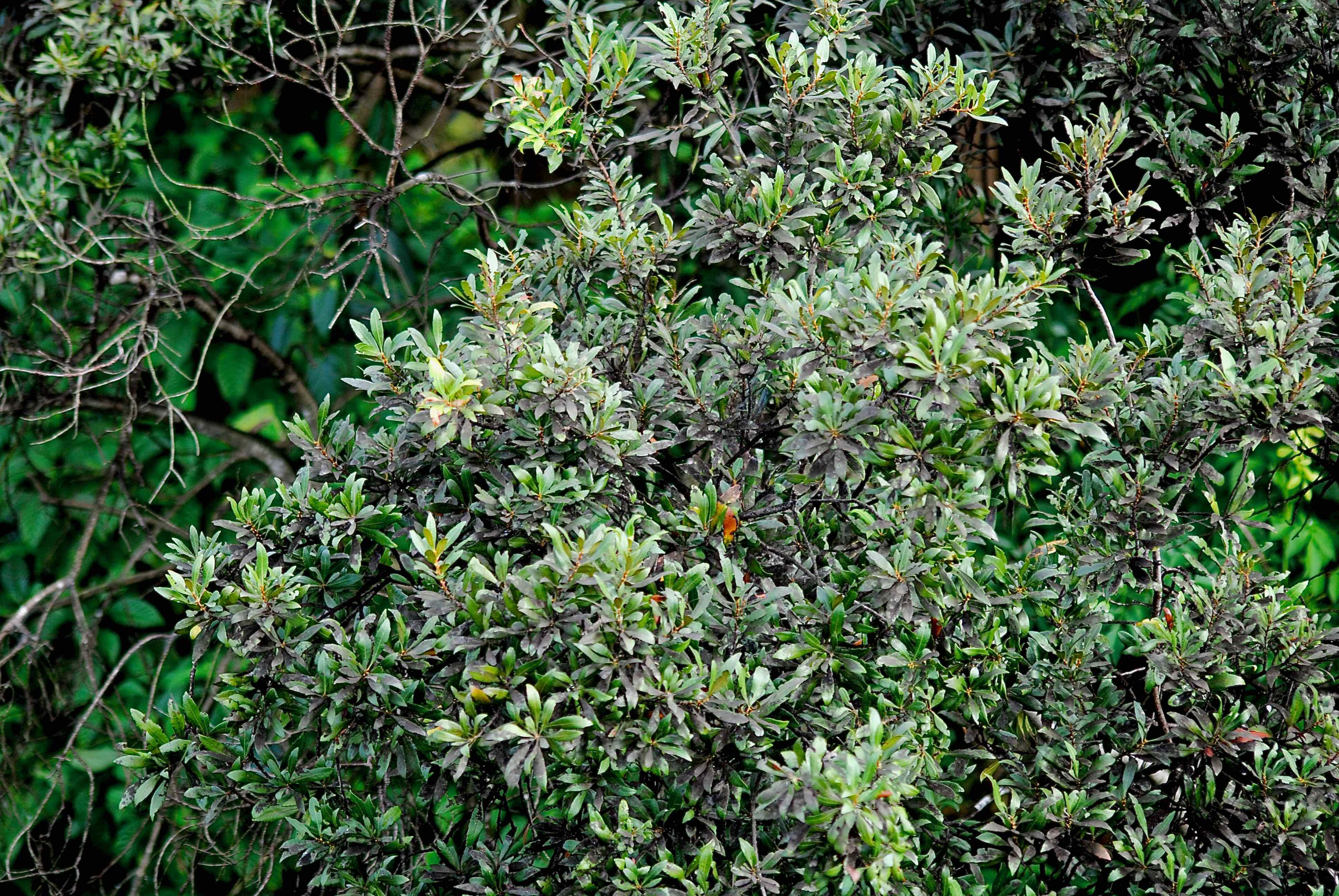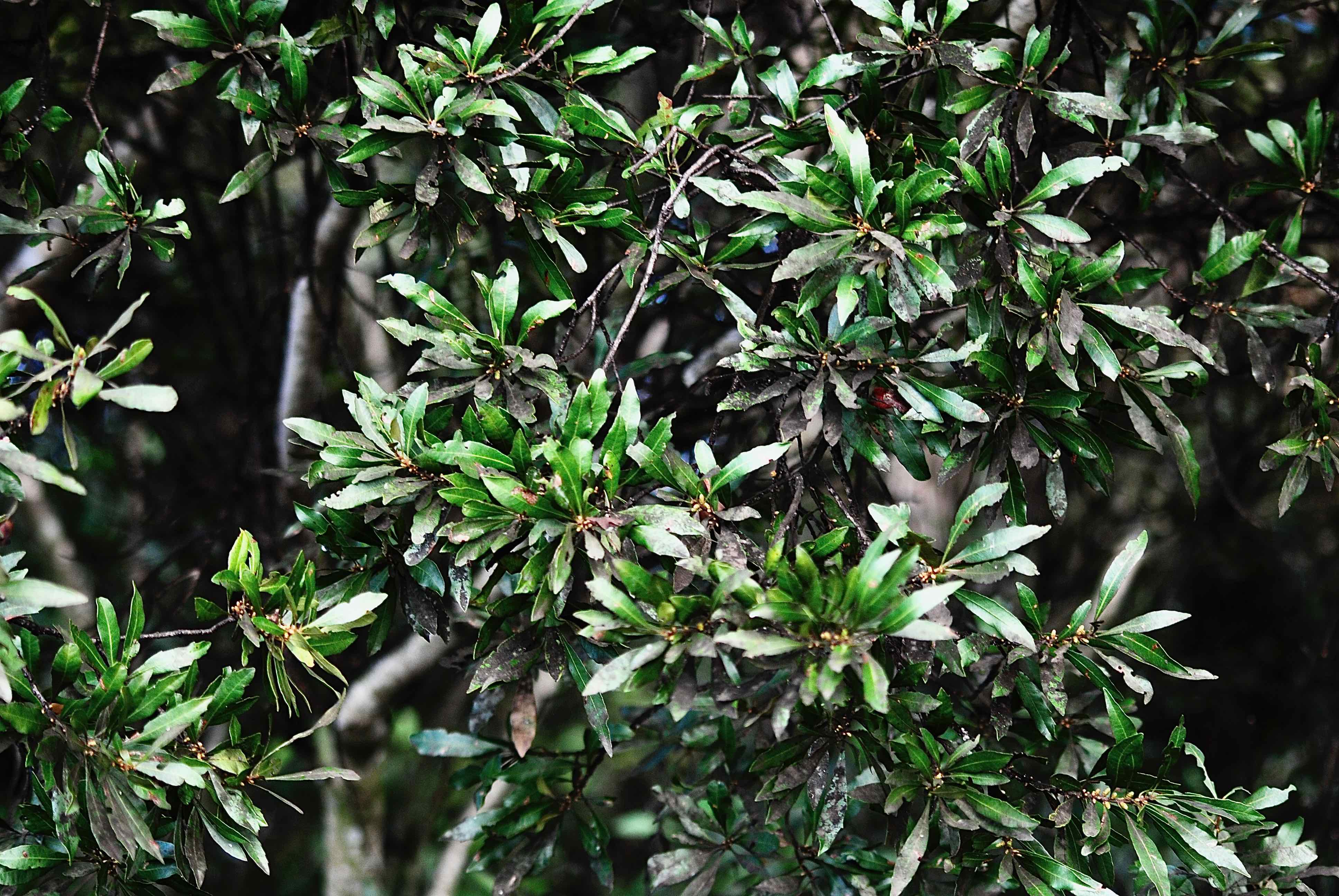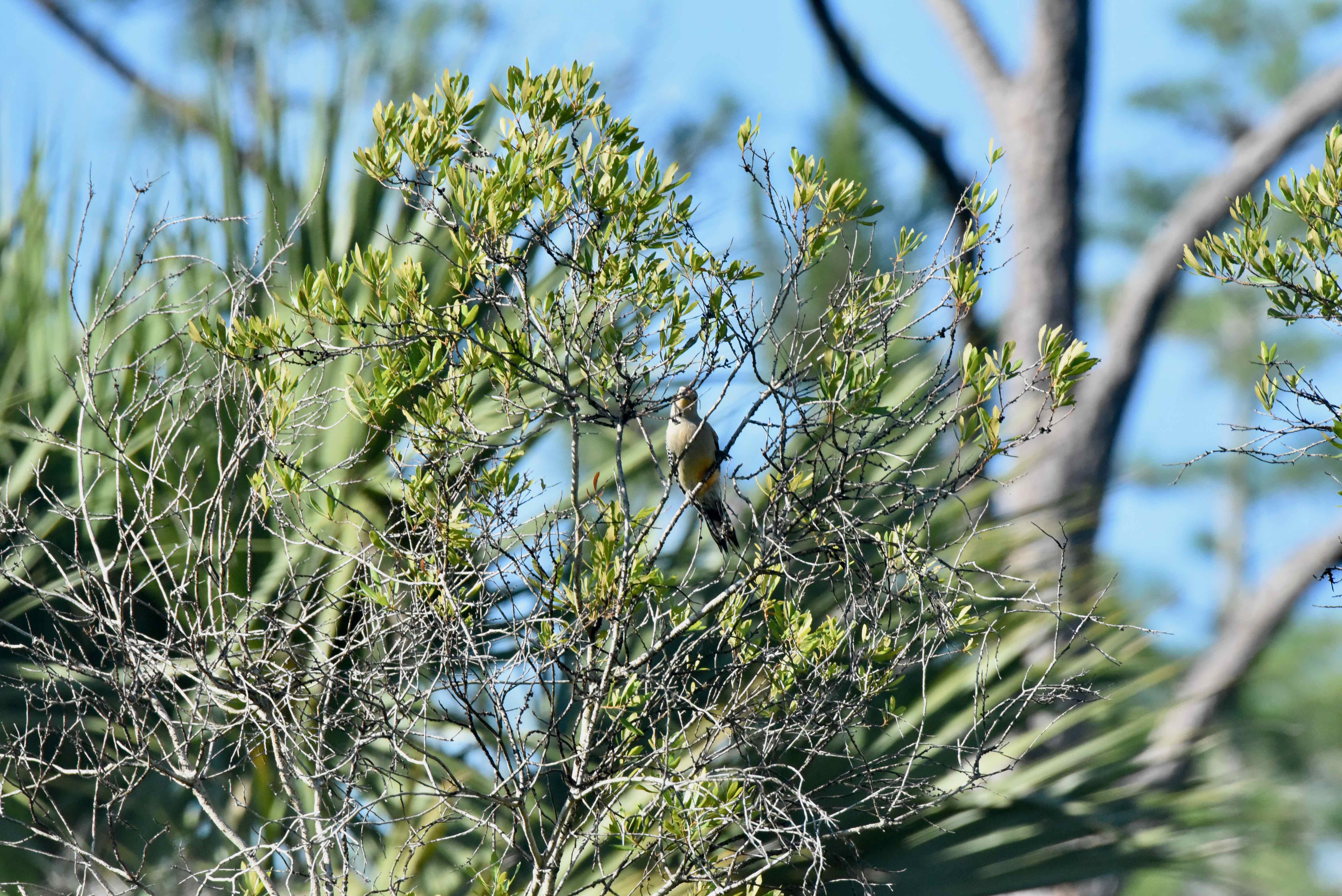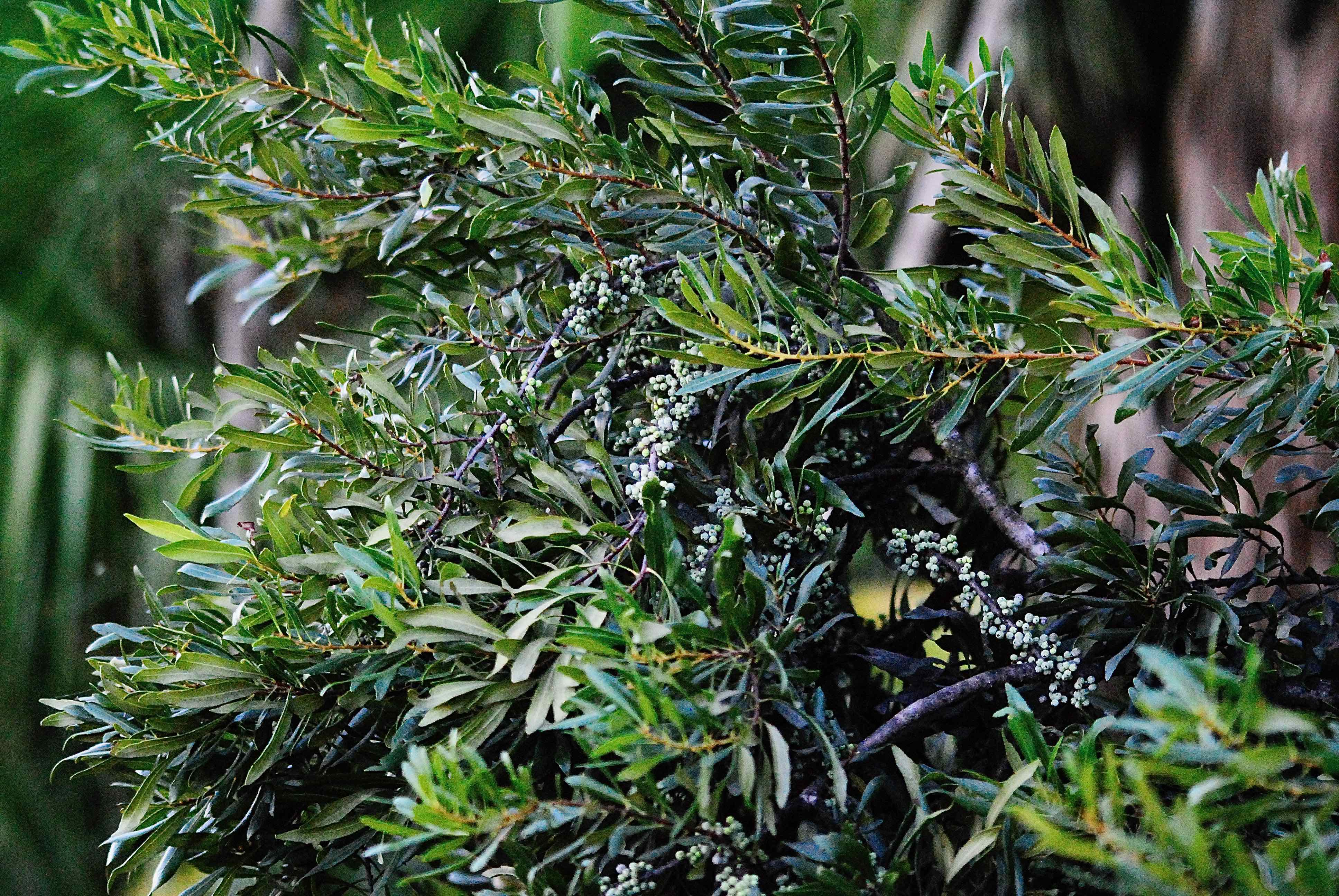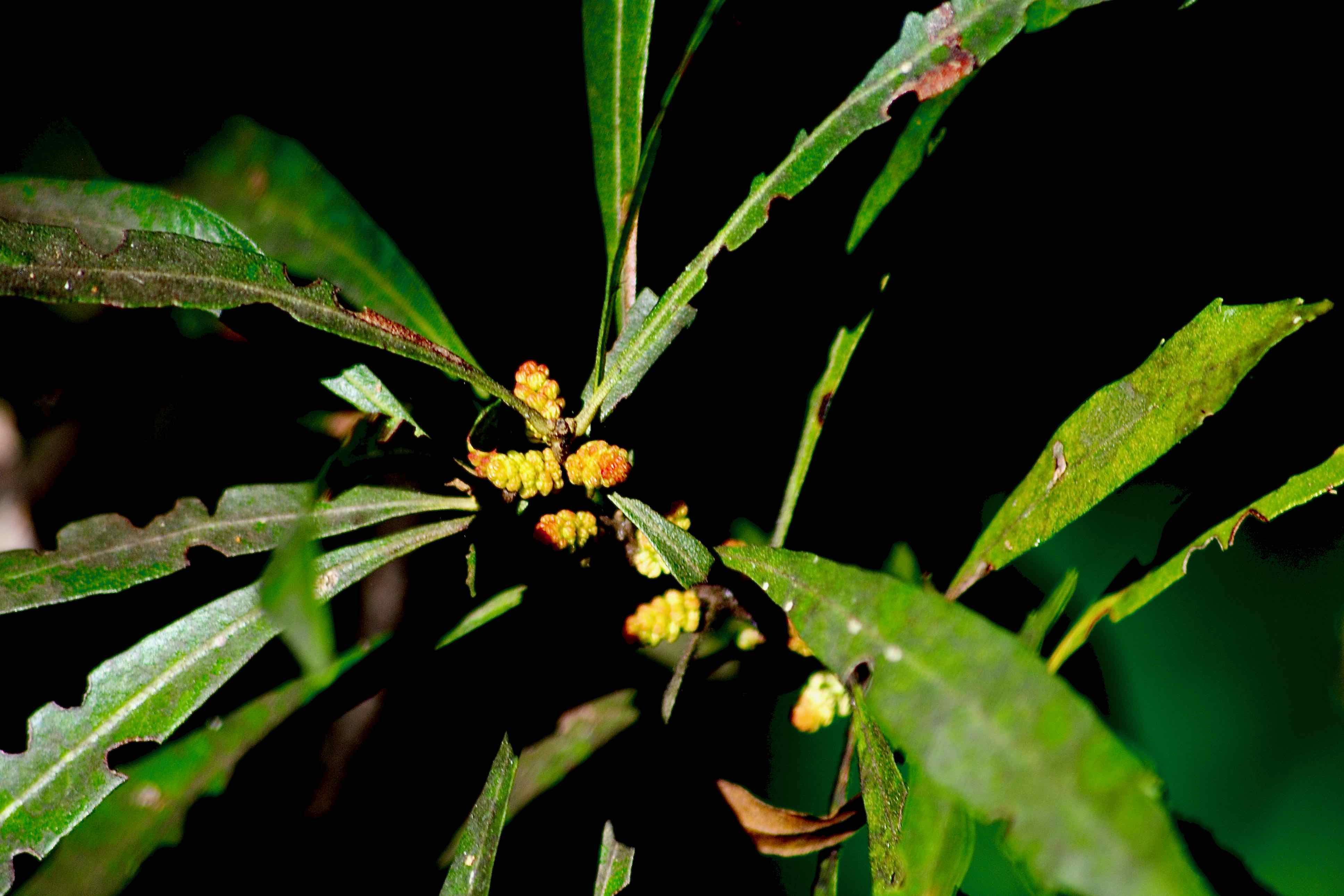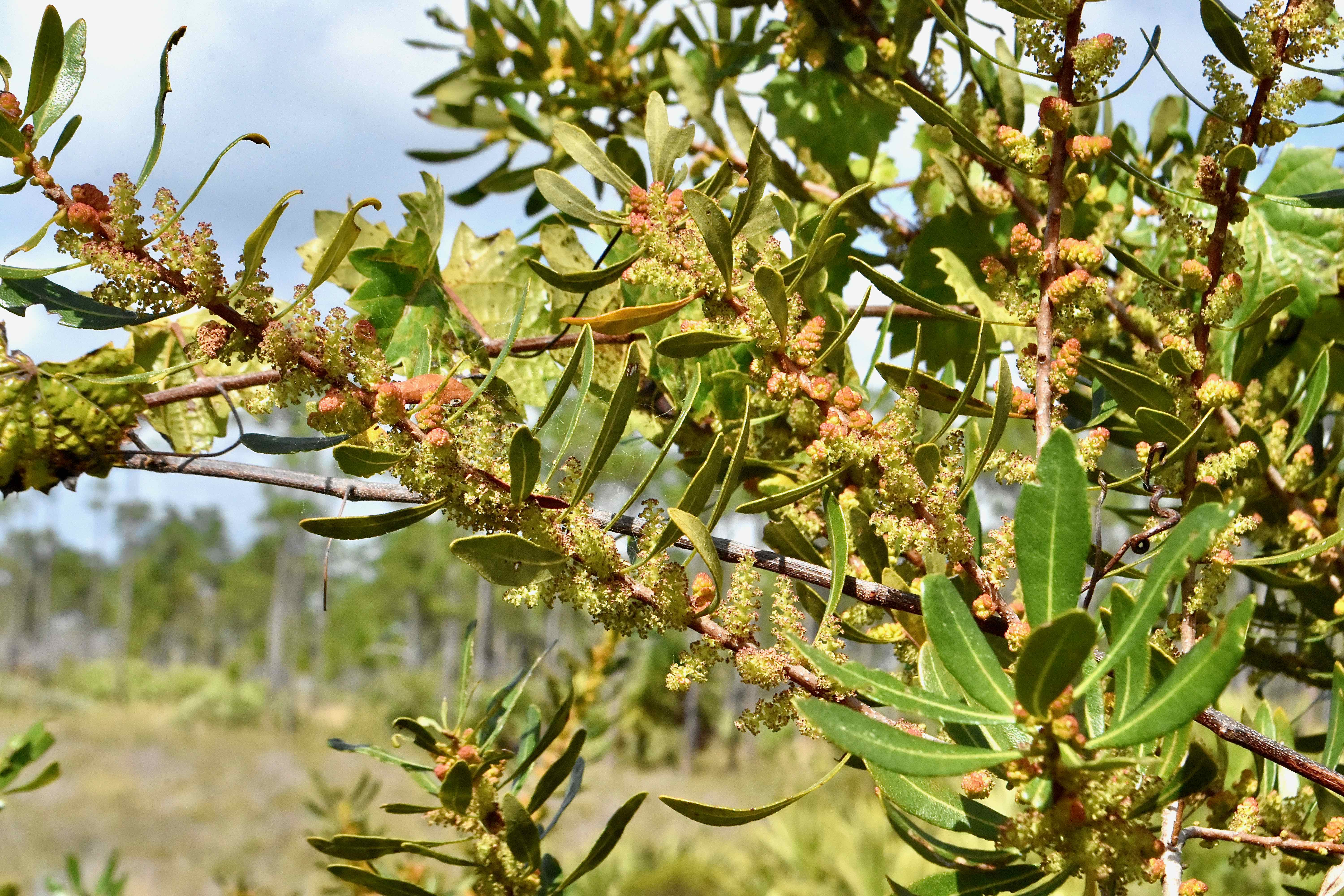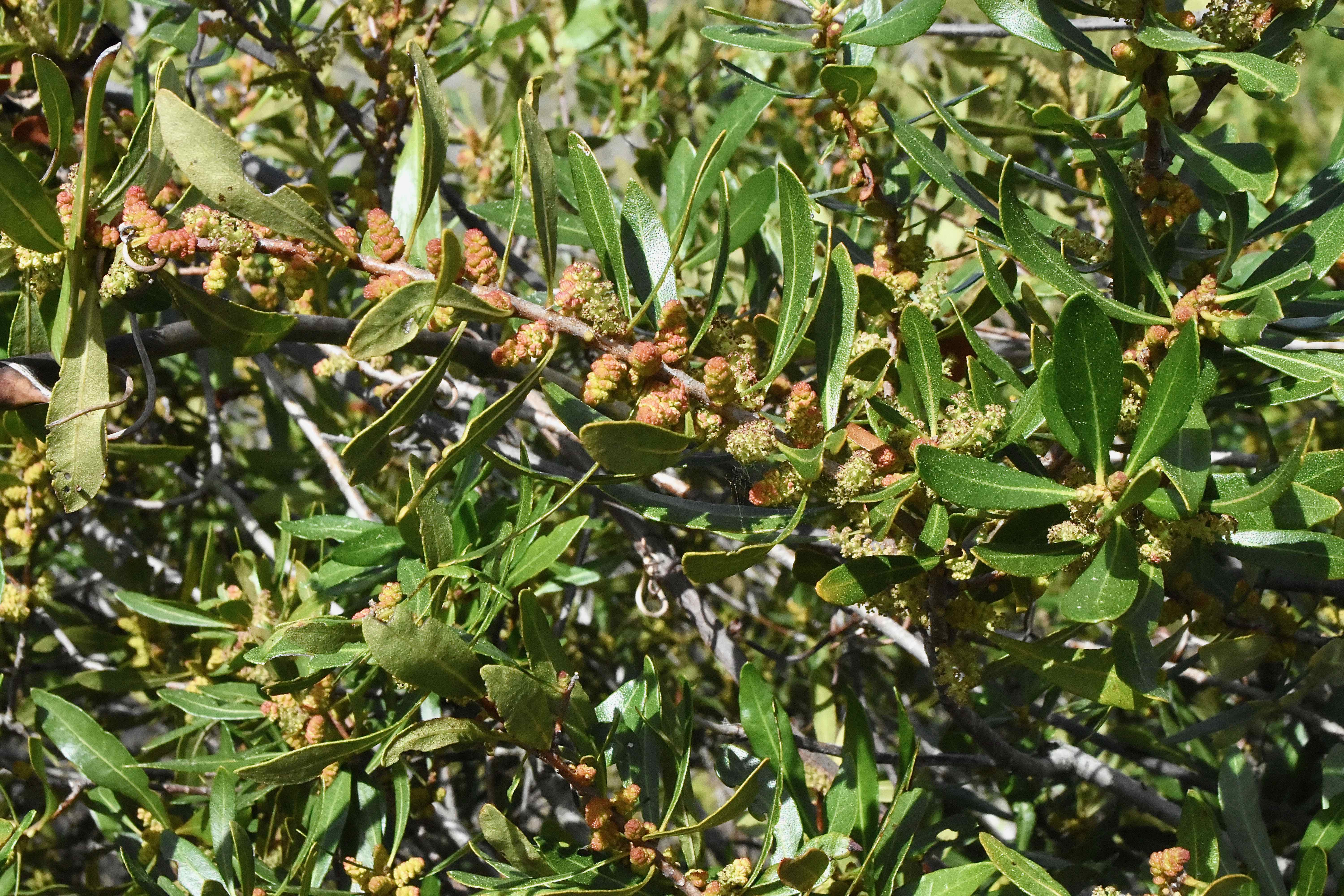
Wax Myrtle, photographed at Sweetbay Natural Area, West Palm Beach, Palm Beach County, in February 2018.
There's a pretty good chance you'll find wax myrtle, Myrica cerifera, sitting somewhere in your house. Perhaps even in your refrigerator.
Wax myrtle is one of the most incredibly versatile, not to mention, important, plants found growing on the North American continent. It's been a source of food, medicine, insect repellant and cleaner. The list of birds who dine on its fruit is lengthy.
It is native to Florida, where it's found in almost every county in the state, and most of the southeastern U.S. and as far north as New Jersey and as far west as Oklahoma and Texas. It's also found in Bermuda, the Caribbean, Mexico, Central America and South America.
It is a shrubby tree that is usually less than 20 feet high but can hit 35 feet. Its leaves are long, narrow, wax-covered and aromatic when crushed. The edges, or margins, can be smooth or slightly serrated, or toothed. The flowers are white and small; male and female are on separate plants. It blooms year round, but peaks winter into spring. The fruit is small, pellet-size, and waxy. Wax myrtle is found wide range of habitats, in swamps and the edges of forests and in sand hills. It sends out rhizomes, or stem-like roots, to form dense colonies.
But wax myrtle can vary greatly according to habitat. In drier places where it's found, it tends to be smaller, more shrub-like, with smaller leaves, but forming large, dense colonies. In wet places, wax myrtle tends to be taller, more tree-like, with larger leaves and less likely to form colonies. Whether the differences are genetic — different forms of the same species — or the result of environment is an open question.
Its dense foliage makes it perfect for use as a screen, but wax myrtle is also used as a specimen or accent plant, or in restorations and natural landscapes.
Its best-known use is for making candles. Early settlers boiled the berries in water to separate the waxy coating from the fruit. That method is still used. Wax myrtle is also used in some beers to improve the foaming. The berries can be eaten out of hand, but they're also used to make preserves and wine.
For Native American tribes, including the Seminoles, Choctaw, Kosati, Micmac and Houma, wax myrtle was a veritable medicine cabinet. They used various parts to make pain killers and stimulants, to treat headaches, as a gargle for sore throats, to treat worms and dysentery. The Seminoles even made a love potion to strengthen marriages from its ashes. Native Americans would rub their skin with the leaves to repell mosquitos; they would smoke it for the same purpose.
Wax myrtle is a member of Myricaceae, a family of trees and shrubs. Another name: southern bayberry. Note: the United States Department of Agriculture calls it Morella cerifera and considers Myrica cerifera a synonym.
Click on photo for larger image
Links for Wax Myrtle

